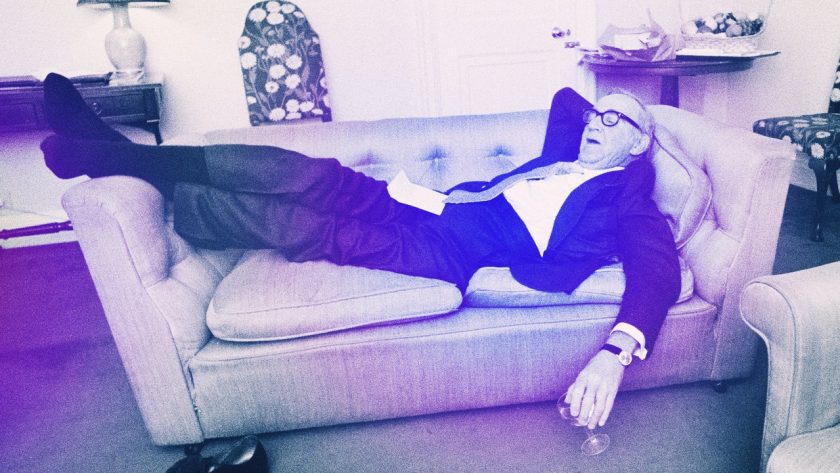There is a certain irony to being a health and wellness expert whose lifestyle isn’t all that healthy at times. Don’t get me wrong: I eat well and I work out, even if I don’t always love doing it. But I’m also on the road almost constantly: the past few months my work has taken me from New York to Nairobi, Paris, Los Angeles, Los Cabos, Sydney, Melbourne, London, Copenhagen…and I’m sure I’m forgetting a few places.
The bad news for me is that science shows that circadian rhythms—the changes that our bodies typically follow in a roughly 24-hour cycle—are central to well-being. This internal clock impacts alertness, hunger, digestion, and even body temperature. There’s no hyperbole when I say these internal clocks have an impact on almost every aspect of our well-being. It’s bigger than fighting off jet lag—it’s central to our mood, energy, metabolic health. Circadian function has even been linked to incidence of cancer.
Your body would still follow a rhythmic pattern if you were locked in a bunker underground thanks to “clocks”—structures found throughout the body that release molecules that impact how we feel. (While it might seem obvious that there are internal molecular components that impact circadian rhythms, it is actually so groundbreaking that this discovery won a Nobel Prize in 2017.)
Our internal clocks also take cues from external signals called “zeitgebers,” from the German word meaning “time giver.” These include light, exercise, eating, social interactions, and even temperature changes. Ideally, our rhythms sync up with this stimulus to make sure we get the most out of our sleep and wake up feeling refreshed. But our bodies love routine, with a busy schedule full of travel it’s hard to feel your best. It doesn’t stop there: From indoor work to late night scrolling, modern life is hostile in general to the body’s natural rhythms.
That’s just how the game works in the sport of life: We can’t expect everything to be balanced, and that’s no reason to give up. We just have to put in a little extra effort to make sure our health doesn’t deteriorate. With knowledge and action, we can alter the way our internal rhythms work—the way our body operates is not fixed. I’ve written about the importance of getting sunlight in the morning to help improve sleep—that is one of your key rhythmic behaviors, perhaps the most important. But there’s so much more. I wanted to share the tools I keep with me and the non-negotiable habits I use to turn my actions into supportive stimuli to reorient my rhythms and promote health. And it’s not complicated or expensive.
A Lightweight Workout Pack
When I’m on the road, I always have some tools with me, but I keep it to the essentials. I stick with a pair of sneakers that can also serve as running shoes, a jump rope, and exercise bands. I put a few bodyweight circuits together for an early morning burst and I’m good to go.
Exercise is one of the most powerful tools you have for health, and much of its benefit depends on timing, especially if you want exercise to improve your sleep. This is why I exercise in the morning when I’m on the road. Morning exercise is linked to better sleep at night, helps increase body temperature (improving alertness and letting my body know that I should be awake), and will “advance” my circadian rhythm while helping me sync to the new time zone. (When you advance your circadian rhythm this basically means melatonin, a hormone that assists you with falling asleep, will be released earlier, which can lead to improved sleep.)
The D-Minder App
Twitter put me on to this (free!) app and I’ve been using it to keep me honest with my sun exposure. The app tells you the best time to get light for vitamin D (but not sunburn) which ensures I take breaks to go outside during the work day which helps keep my rhythms aligned. The earlier we get light exposure, the more our body clock knows this is the time of day that we should be awake. The benefits to sun exposure go far beyond vitamin D as we also have receptors in our skin that help us make serotonin and get converted into melatonin as the sun goes down. The body is programmed to induce sleep at all costs, and the more we can work with those rhythms, the better.
A Sleep Mask
Exposure to bright light during the day can be beneficial, and the opposite is true as the sun begins to set. I am one of those people who do their best to avoid both bright lights and blue light at night as over-exposure can cause circadian disruption. If light is always available, our body can’t tell what time it is, leading to a dysregulation of our internal rhythms. So both on the road and at home I reduce the lights in my apartment after that sun begins to set and slip on some cozy silkas I nod off to dreamland. There’s an immeidate benefit—I sleep better—and recent research shows next-day learning and alertness might improve too.
Try out these tools but more importantly put them into practice. If you time it right, you’ll be pleasantly surprised how such a small intervention can have a lasting impact on your health.



